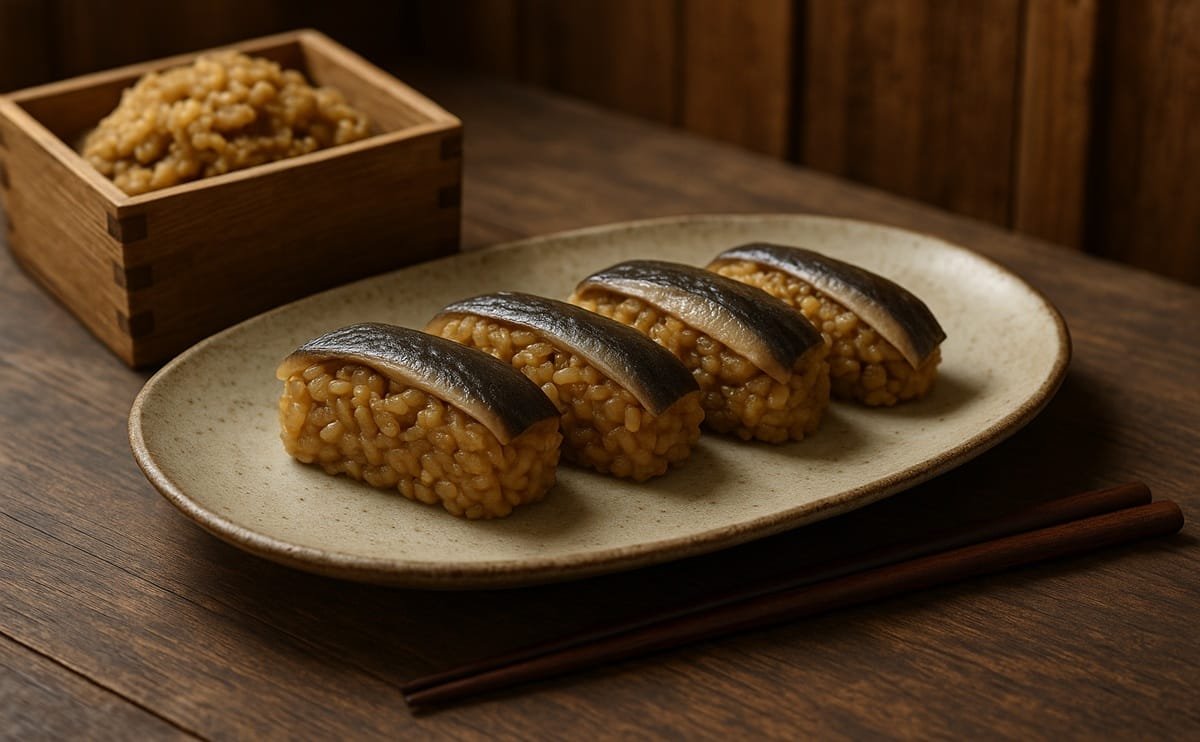The True History of Sushi: From Ancient Preservation to Global Cuisine

Earliest Known Sushi – Ancient Narezushi Style (circa 8th century Japan)
This image depicts a traditional recreation of Narezushi, the original form of sushi made by fermenting fish with rice. Originating in Southeast Asia and refined in Japan, Narezushi dates back over 1,000 years. The brownish fermented rice and preserved fish reflect how sushi looked before it evolved into today’s fresh and colorful styles.
The True History of Sushi: From Ancient Preservation to Global Cuisine
Sushi is now a symbol of refined taste and global cuisine, but its origins are far more humble and practical. The history of sushi stretches back over 2,000 years, evolving from a method of preserving fish to one of the world’s most celebrated dishes.
Sushi’s Beginnings: Fermentation in Southeast Asia
Contrary to popular belief, sushi did not originate in Japan. The earliest form of sushi, known as narezushi, emerged in Southeast Asia and later spread to China and Japan. This ancient dish was a preservation technique, where cleaned fish was placed in fermented rice to prevent spoilage. The rice was discarded, and only the fermented fish was eaten.
Japan’s Influence: From Preservation to Culinary Art
By the 8th century, sushi became common in Japan. However, Japanese cooks began modifying the recipe. Instead of discarding the rice, they shortened the fermentation period and ate the rice along with the fish. This innovation turned sushi from a survival method into a palatable food.
This change led to new types of sushi, using vinegar to replicate the sour taste of fermentation, making preparation quicker and easier.
The Birth of Modern Sushi: Edomae-zushi in Tokyo
In the early 19th century, during the Edo period, sushi evolved again in Tokyo (then called Edo). A chef named Hanaya Yohei revolutionized sushi by serving raw fish atop small portions of vinegared rice. This new style, called Edomae-zushi, became Japan’s first form of fast food, sold at street stalls.
Edomae-zushi used fresh fish from Tokyo Bay, often marinated or lightly cooked, and could be eaten quickly with the hands—perfect for the fast-paced urban life.
Sushi Goes Global: From Japan to the World
After World War II, sushi began spreading beyond Japan. The first sushi restaurants appeared in Los Angeles during the 1960s, catering to Japanese immigrants and curious Americans. Innovations like the California roll, which used avocado and imitation crab, helped make sushi more approachable for Western palates.
Today, sushi is a global phenomenon, served everywhere from high-end restaurants to supermarket shelves. Countries like the United States, Brazil, and even Norway have developed unique local styles of sushi.
Myths & Misconceptions: Is Sushi Japanese?
While Japan refined and popularized sushi, the original concept came from Southeast Asia. Some legends credit Buddhist monks with its invention, but there is no historical evidence for this. What is certain is that sushi’s journey spans cultures, centuries, and continents.
Conclusion: A Simple Dish with a Complex History
The history of sushi is not just about food—it’s about innovation, adaptation, and cultural exchange. What started as a method to keep fish fresh has become a globally recognized cuisine. Understanding sushi’s real story makes each bite more meaningful.

